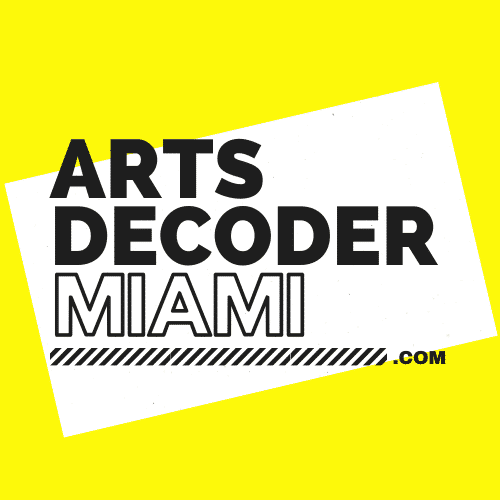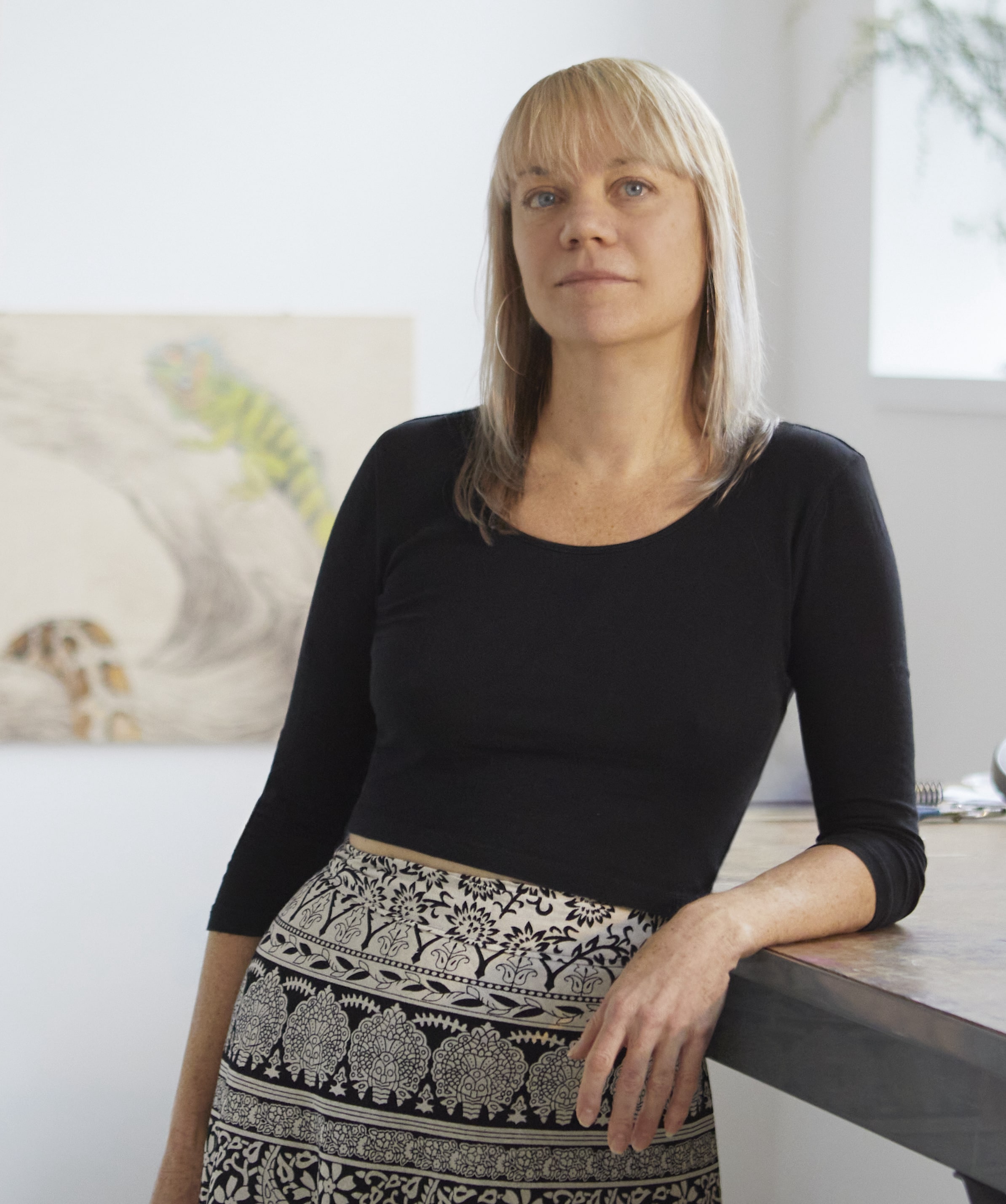
Christina Pettersson (The Artist Who Resurrects Lost Landscapes And Stories)
We had the privilege of getting to know Christina Pettersson, an artist and activist, who transforms the world into a visual artventure helping humanity think deeper about the environment. Read our conversation below!
How did you begin your journey into the world of art?
My mama had me in art lessons at age six, and I don’t remember wanting to be anything else but an artist. She’s the reason I became an artist, the only person who always totally believed in me, even when I didn’t. It was a fortunate time to be in the Miami-Dade Public School system in the 1990s as I was able to attend early magnet art programs at Norland Middle/High in Carol City, and then New World School of the Arts in Downtown Miami. Those programs and the amazing teachers and friends I had at those schools shaped my life. I feel lucky knowing I chose a career where I can have the greatest impact.
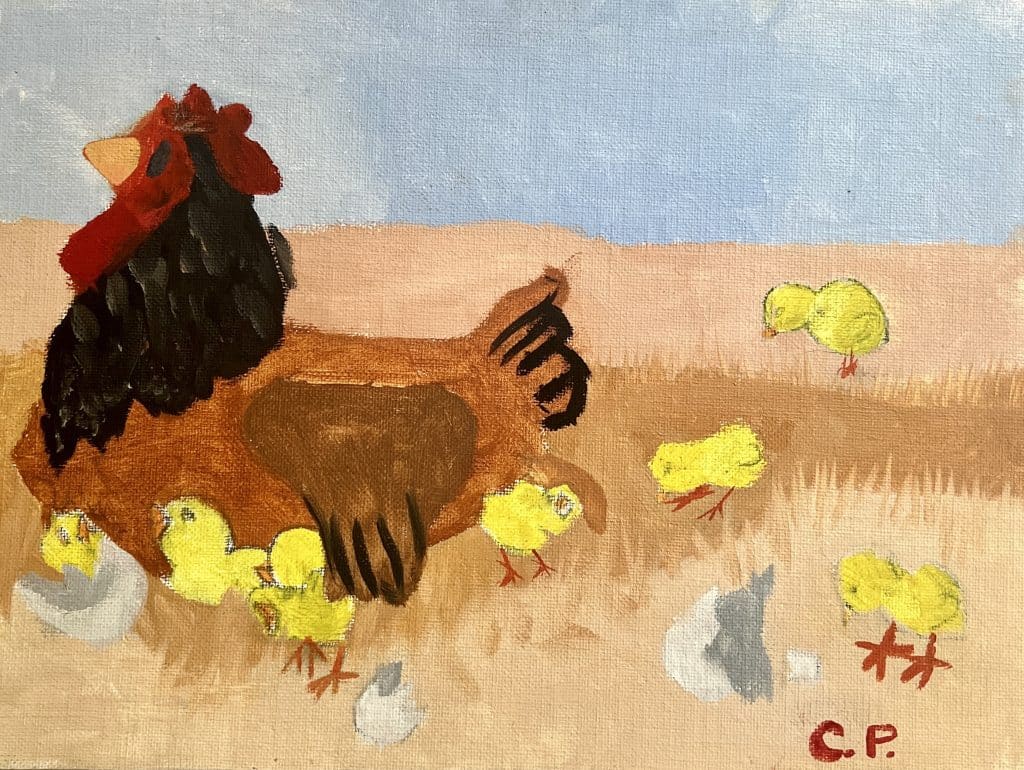
Christina’s First Painting, Age 6.
How do you define yourself as an artist and what is your mission?
In the past, I might have called myself an archaeologist or an undertaker, digging up all of Florida’s secrets. I’ve spent many years through my art unearthing the “bones and blood” of Florida’s forgotten, underappreciated, deliberately buried history and landscapes. I believe people should go digging for history. They should tear down and rebuild what doesn’t work. This can be done beginning in their own backyard.
Since Covid, I see my art practice shifting with my growing enchantment with gardening and plant history. This primal desire focuses on the pleasures of digging into the earth itself. I’ve discovered so much about human history by studying ancient relationships with plants and animals. I am amazed at how much knowledge comes from a deeper study of even the smallest plot of land. I live on a golf course in Hialeah on the edge of the Everglades that not so long ago was a slough in our river of grass. Before they built I-75, we had neighbors with airboats that could go out into the Everglades from their backyard. We can lose connections like that in a generation, but we can also bring them back. That’s what gardening has taught me. By drawing and planting native plants, I can resurrect landscapes from the dead. I hope my art reminds people that the world has not always looked like it does today and that humans have communed more directly with the earth for eons.
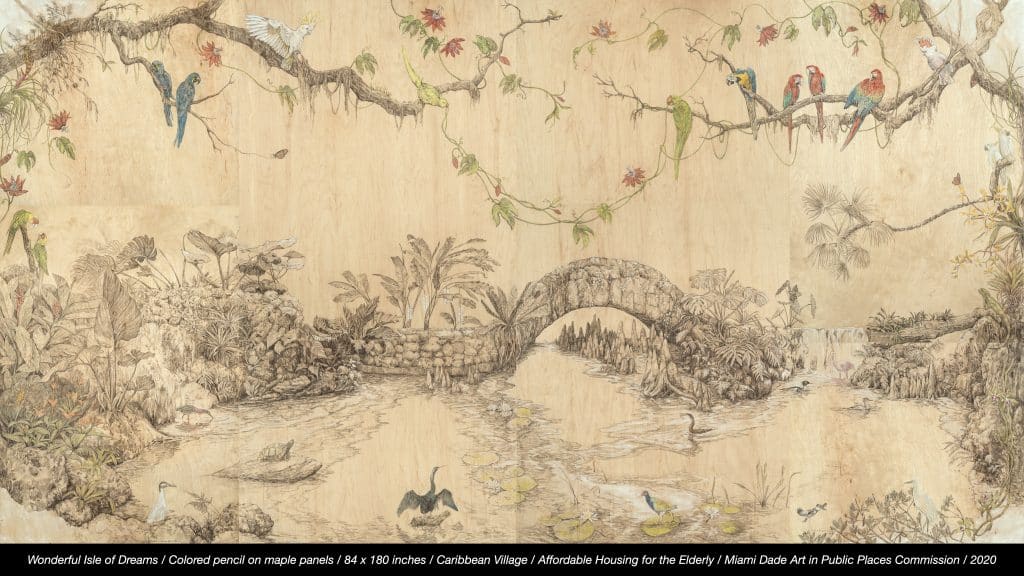
What type of art have you created over the years and how has your creativity evolved?
While my practice is drawing-based, I engage in a wide variety of mediums, from wallpaper design to full-scale replicas of a Victorian funeral carriage to large-scale performances that bring to life the mermaids and statuary at Vizcaya or resurrect forgotten historical women who made South Florida possible.
Creating performances ends up being wonderful community projects, getting me out of the studio and directly into the places where the narratives originate. It’s so much fun to be able to work with talented local dancers, actors, musicians,
historians, and all kinds of volunteers, who bring a different perspective than my own. There are few moments as adults when we can get together and play around with material and stories. I love creating those opportunities for the public.

Forgotten Frontier, 2020, wallpaper design from original drawings.

No Wealth, No Ruin, No Silver, No Gold, Nothing Satisfies Me But Your Soul, 2014. Handmade replica of a Victorian funerary carriage.
Which of your creations are you most proud of based on the process you had to go through to achieve the final result?
My immersive exhibition at Faena in 2023, called Take This Waltz, was my most monumental work, in which volunteers created costumes representing flora and fauna that once existed on Miami Beach. Everything from bears to dire wolves were turned into a waltzing live shadow puppet performance filmed at the Faena Theater. That was only possible through enthusiastic community participation, and a reminder of our wild ancestry and that we are still animals in this world.
Where have you had the privilege of showcasing your work?
Exhibitions at historic places and parks are the ultimate collaborations. When I had my solo exhibition, Mythology and Site at Deering Estate in 2018, I not only hung artwork but brought archival material from my own family history that intermingled with the Deering family. My grandfather’s desk, which he carved himself, was placed in the exhibition next to Charles Deering’s desk. My grandmother’s wedding linens were placed in the Deering family linen case. My family having a historical connection to the Deering family is something special. These sacred spaces are so much more meaningful than exhibiting in a gallery because you’re in direct conversation with the past.
I’ve been able to bring people out to a number of wild places over the years, for instance, creating a performance at Nike Missile Site deep in the Everglades to visiting archives and sites at Vizcaya and Miami River. I like reminding people there is beauty worth exploring beyond the beaches of Miami.
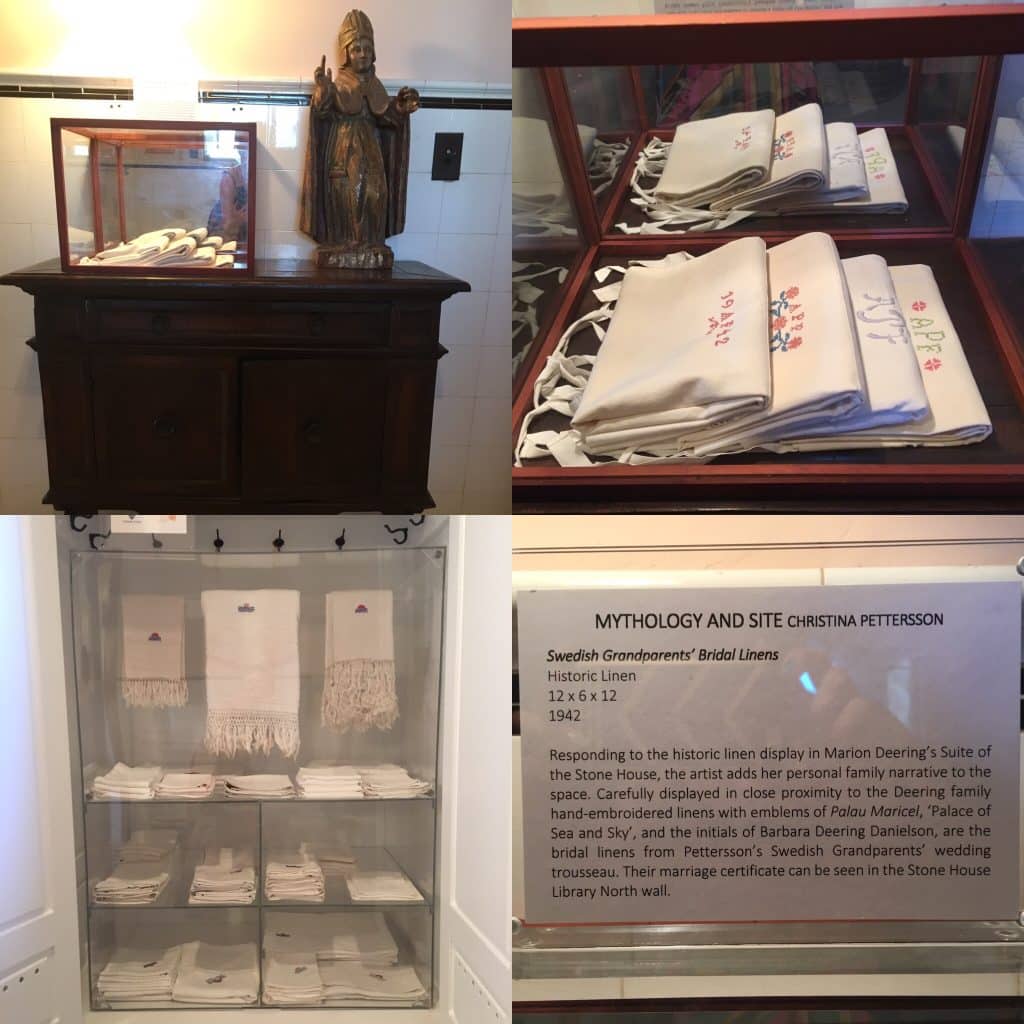
Swedish Grandparents’ Bridal Linens from 1942. Installed at the Deering Estate Historic Linen Cabinet as part of solo exhibition, Mythology & Site, 2018-2019.
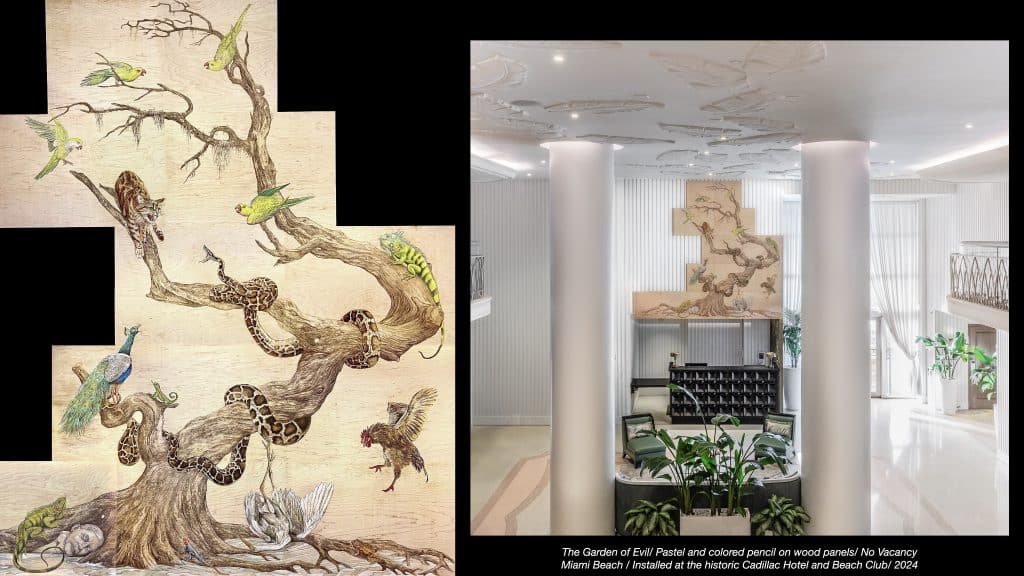
Do you have any current and upcoming projects that you are working on?
Right now at the Kampong Gardens in Coral Gables my solo show, Revenant Florida: Landscapes As Living Memory is up through June 7, 2025. It’s incredible to hang drawings of plants in the actual home of David Fairchild, one of the most famous plant experts. When people visit the exhibition they’ll not only see my artwork but enjoy the incredible secret historic garden that helped shape the landscape we still see in South Florida.
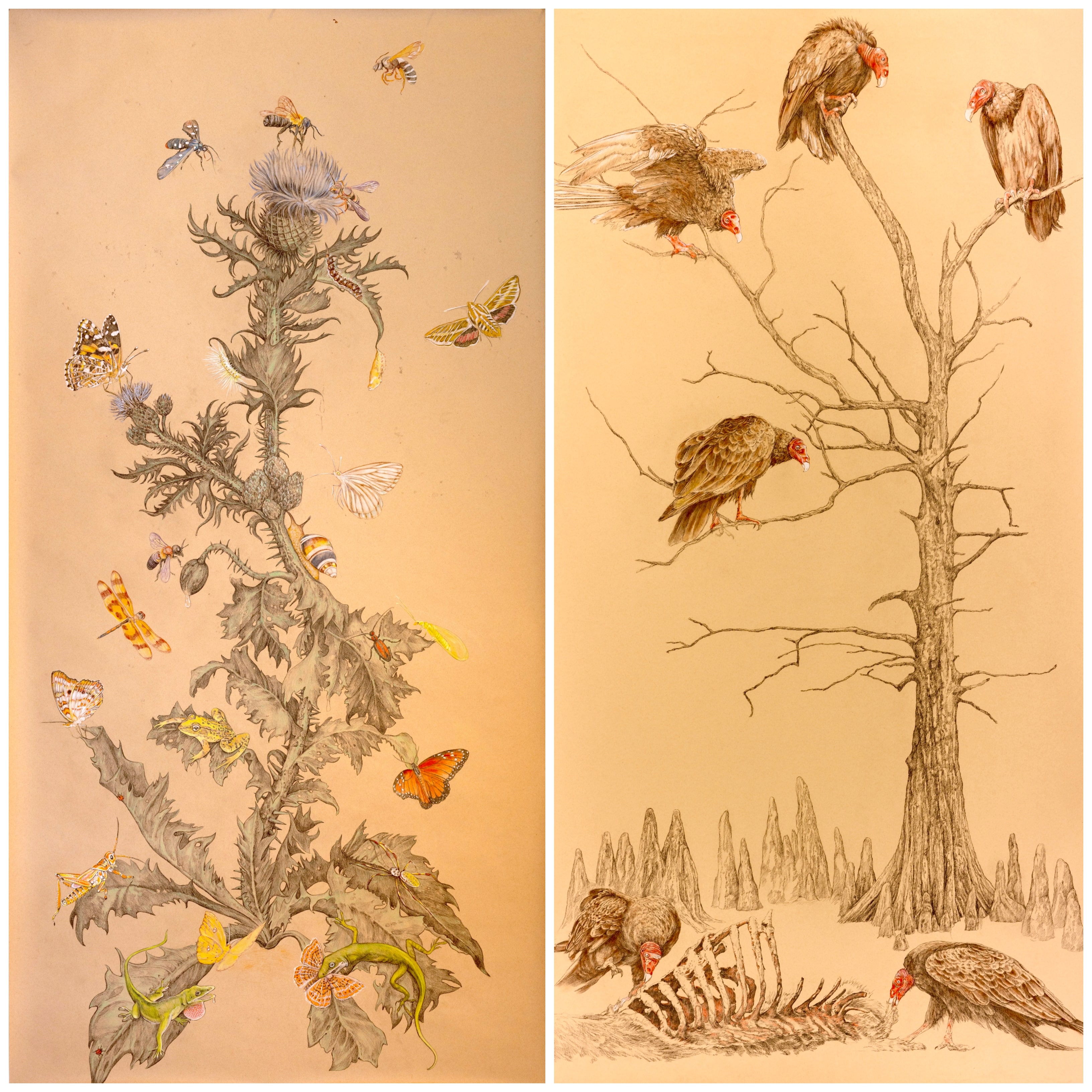
Art on the left: Thistle, 2024, colored pencil and pastel on Strathmore paper, 84 x 42 inches. Art on the right: Vultures, 2024, colored pencil and pastel on Strathmore paper, 84 x 42 inches.
If there is one thing you can change in the world through your artistry, what would that be and why?
I want people to go out and play around more, get dirty, risk disarray and judgment. We have to get out of our heads more often and I find on most days there’s nothing that clears my head like a simple walk filled with observations. No judgments, just observations. I guarantee there are a million things you’ve never noticed about your neighborhood like where the sun hits, when the leaves drop and what phase the moon is in now. These seem like small details but they meant everything to our ancestors, and you will feel more alive in the world observing them.
As an artist, what is your most unusual discovery while storytelling about South Florida?
I was installing a major exhibition, In the Pines at Locust Projects in the Design District at the beginning of Covid. I was creating an immersive memorial and cemetery to the Pine Rockland landscape and figures within. When George Floyd was murdered, it got me thinking about the murder of Arthur McDuffie in 1980 which led to the Miami Rebellion. I started digging into Miami Herald archives and I discovered that McDuffie was beaten to death on the very same corner as the gallery on North Miami Ave and 36th Street. No one at the gallery had ever heard of that story before. It was a stunning revelation that brought home that awful reality. Talk about finding history in your own backyard. I carved a tombstone for him, which was the last one to go into my cemetery.
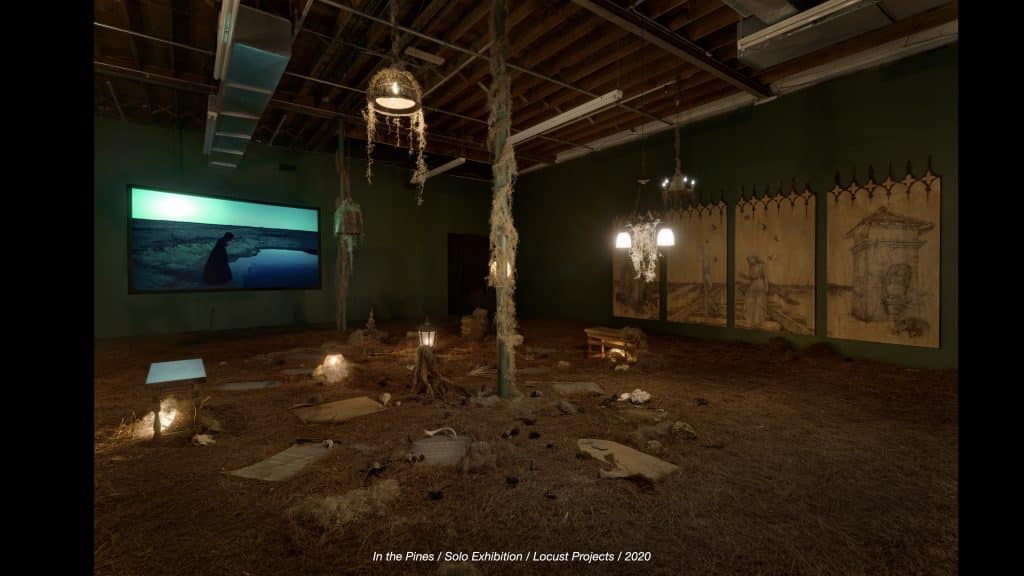
In the Pines, 2020, Solo Exhibition at Locust Projects.
How has South Florida positively impacted your artistry?
There are so many wonderful artists and institutions that support those artists! I’m grateful to have an amazing studio at Bakehouse Art Complex with a ton of great artists who I can reach out to for support or collaboration on a great number of things. Without that I would feel too isolated and in my head.
How do you see your artistry expanding in the next 5 years?
My practice has shifted since Covid, as I find myself seeking ways to work more holistically. I don’t have time to separate my passions from my artistry. If gardening has become a great passion of mine, I recognize that it will become central to my artwork. In my drawings, I’m figuring out ways to incorporate plants with the act of transforming actual landscapes. I am also figuring out more ways to work with like-minded people and organizations. I’m currently in the planning stages of creating an artist-led fertility garden at Collective 62 in Little Haiti. Stay tuned!
Can you share with us some words that inspire you to live creatively?
I think it is very easy to get bogged down in the horror of current events, but as William Faulkner says, “Between grief and nothing I chose grief.” I find I have to feel the sadness first, in order to feel anything else. I wouldn’t feel sad if I didn’t see so much beauty. The world we live in is the only world I’ve known after all, and it is magnificent.
Contact Christina Pettersson
Website: www.christinapettersson.com
Instagram: www.instagram.com/christina_pettersson
Facebook: www.facebook.com/christina.pettersson2
